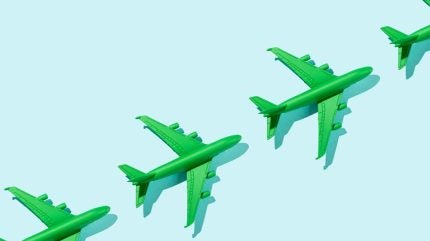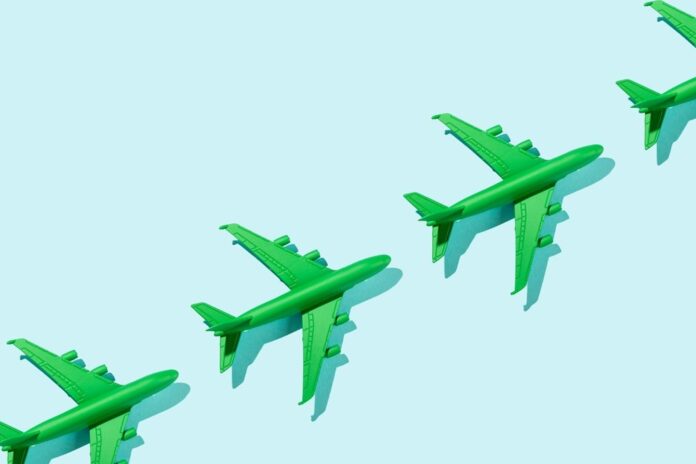
Sustainable aviation fuel (SAF) continues to be one of the major talking points in the civil aviation sector, as evidenced when looking at the developments covered by Airport Technology in 2024. SAF deals were, and continue to be, a prevalent topic, as the industry looks to reduce its carbon emissions.
The Singapore government made efforts to promote the implementation of SAF in February 2024, announcing that SAF would be required on all flights departing the country from 2026. The country’s SAF targets begin with a requirement for 1% SAF, rising to 3%-5% by 2030.
Another big story in February was the news that Airbus and TotalEnergies had signed a strategic partnership agreement for the continued supply of SAF by the latter to the former, as well as continuing research on developing 100% sustainable alternatives.
Industry voices made themselves heard the following month, with the CEO of the group responsible for some of the UK’s busiest airports calling on the UK to direct more of its household waste to the production of SAF.
“The benefits of turning household waste into SAF are clear – it’s better for the environment, reducing emissions by at least five times more than using it to make electricity,” Ken O’Toole, CEO of MAG, which owns the Manchester, London Stansted, and East Midlands airports, said in March 2024.
“It can also contribute to the creation of tens of thousands of new jobs and be a significant driver in helping UK aviation reach its target of net zero by 2050. It is vital that we use household waste in the most efficient way we can to help reduce carbon emissions.”
Access the most comprehensive Company Profiles
on the market, powered by GlobalData. Save hours of research. Gain competitive edge.

Company Profile – free
sample
Your download email will arrive shortly
We are confident about the
unique
quality of our Company Profiles. However, we want you to make the most
beneficial
decision for your business, so we offer a free sample that you can download by
submitting the below form
By GlobalData
SAF is still “highly unlikely to reach price parity”
April was a busy month, with some big names making movements in the SAF market. Southwest Airlines acquired SAF company SAFFiRE Renewables, having invested in the US Department of Energy-backed project since it launched its pilot project in 2022.
Speaking at the 26th World Energy Congress in Rotterdam that same month, Boeing’s sustainability head questioned the economic viability of SAF and the need for industry to accept an upcharge in order to shift to more sustainable options.
“SAF is highly unlikely to ever reach price parity with Jet A fuel, so there is a green premium. We are working towards bringing the price down,” said Brian Moran, chief sustainability officer at Boeing. “The carbon price is coming up, increasing the cost of Jet A, and through scale, we are trying to bring the price of SAFs down.”
However, the aviation industry understands the need to embrace greener solutions despite the cost difference. In June, the International Air Transport Association (IATA) announced the launch of a SAF Registry to improve reporting of emissions reductions gained by using the fuel across its supply chain. IATA Director General Willie Walsh said the registry would benefit all SAF stakeholders.
“Governments need a trusted system to track the quality and quantities of SAF used. SAF producers need to accurately account for what has been delivered and effectively decarbonised,” Walsh said during the IATA’s 80th AGM in Dubai, UAE.
“Corporate customers must be able to transparently account for their Scope 3 emissions, and airlines must have certainty that they can claim the environmental benefits of the SAF they purchased. The registry will meet all these needs.”
Big money SAF investment
The year started with news in January that multinational logistics company DHL signed a five-year deal with e-commerce company Mytheresa worth “several million euros” for DHL’s GoGreen Plus SAF solution, which both companies estimate will reduce Mytheresa’s CO2 emissions by around 25,000 tonnes.
Canada announced in January that it planned to invest C$6.2m ($4.6m) into a new study looking to support the growth of the SAF industry in the country and build a factory in Manitoba.
Samsung E&A announced its entry into the SAF market in December, with a $955m contract to construct a biorefinery in Malaysia with oil giant Petronas. Set within Petronas’ Pengerang Integrated Complex in Johor, Malaysia, the biorefinery will process approximately 650,000 tonnes per year of raw materials to produce SAF, hydrogenated vegetable oil, and bio-naphtha.
In November, energy infrastructure developer Solarig announced a new SAF production facility, named Turboleta SAF, in the Platea industrial park in Teruel, Spain. With an investment of €1.15bn ($1.19bn), the plant is expected to produce more than 75,00 tonnes of SAF per year.
Big volume SAF deals
One of the biggest deals of the year by an airline came in November when Air Canada announced an agreement to buy 77.6 million litres of SAF from Finnish multinational oil and gas company Neste for use at the Vancouver marine terminal. The deal marked the airline’s first commercial import of SAF into the country.
One of the other biggest SAF deals by volume in 2024 came in April when Boeing announced its “largest purchase of blended SAF” from Neste and World Energy. The US manufacturing giant said it had bought 35.6 million litres of blended SAF for its own operations and to help support the uptake of SAF globally.
Air New Zealand made headlines in December, announcing the purchase of over 30 million litres of SAF from Neste, to be uplifted from Los Angeles and San Francisco in the US until February 2026. At the time of the deal, the flag carrier said that the purchase was its largest contract for the supply of SAF to date.
Among the other notable SAF deals in 2024 were HSBC Hong Kong purchasing 9.63 million litres of SAF from EcoCeres for Cathay Pacific flights departing from Hong Kong International Airport; Emirates’ deal with Neste for 9.09 million litres of blended SAF at Schiphol Airport; and Air New Zealand’s purchase of 9 million litres of SAF from Neste for operations at Los Angeles International Airport.
EU and UK maintain SAF push
July saw the announcement that the European Union Aviation Safety Agency (EASA) has plans to launch a SAF Clearing House, aimed to support the development of the fuel and remove barriers to the approval of new pathways.
In November, the UK government unveiled a revamped task force, called the Jet Zero Taskforce, aimed at steering the aviation sector towards a sustainable future. The Taskforce mandate includes supporting the development and adoption of SAF and zero-emission flights, along with enhancing the efficiency of aviation systems.
And the efforts continue this year, with the UK’s SAF mandate coming into effect on 2 January 2025. The mandate requires that flights departing from UK airports must use a minimum of 2% SAF. This will progressively increase, targeting 10% SAF usage by 2030 and 22% by 2040.


